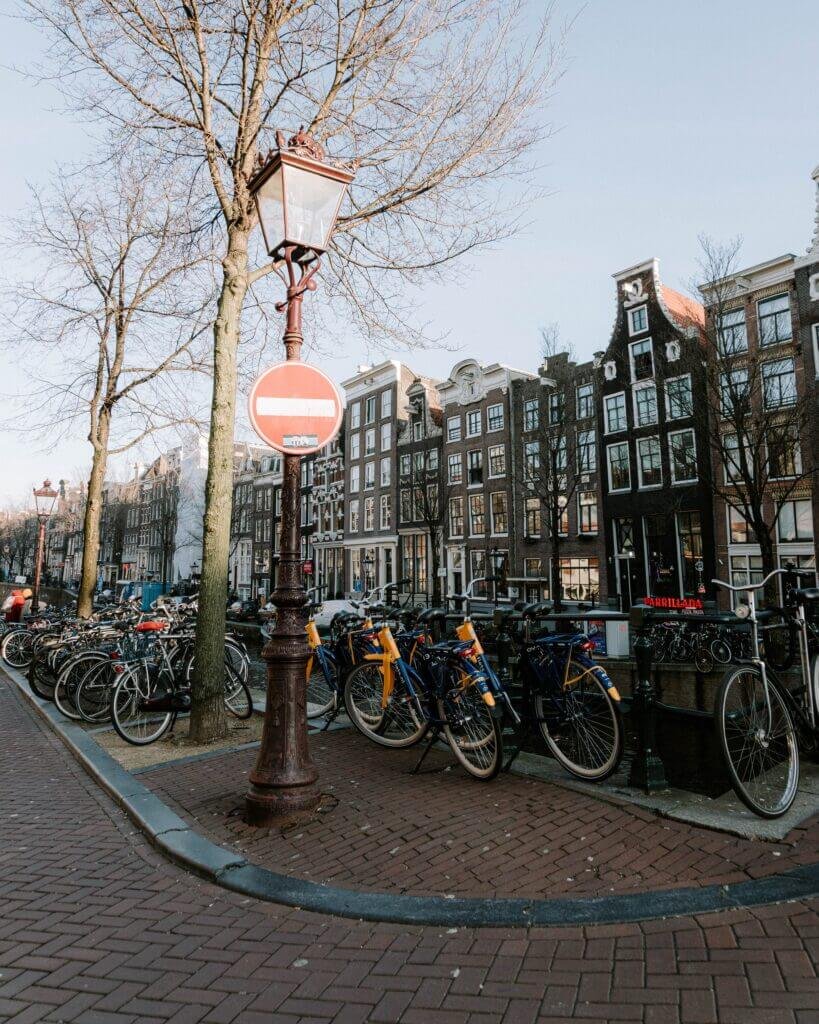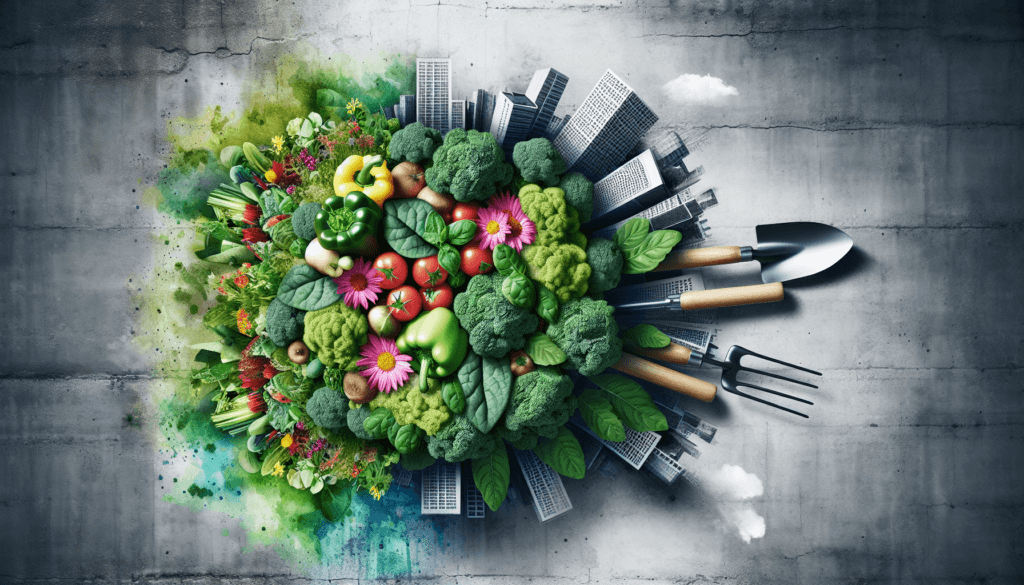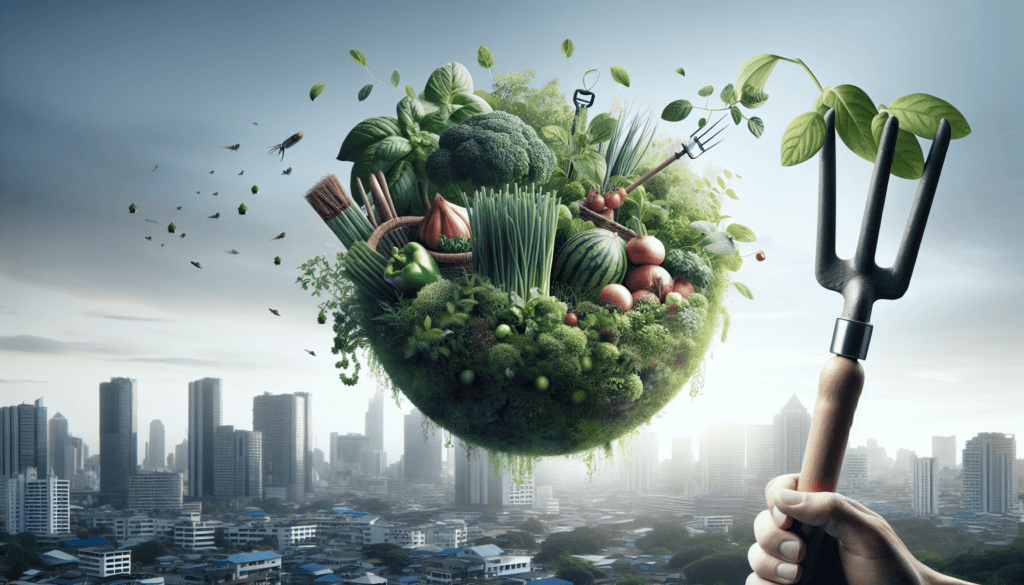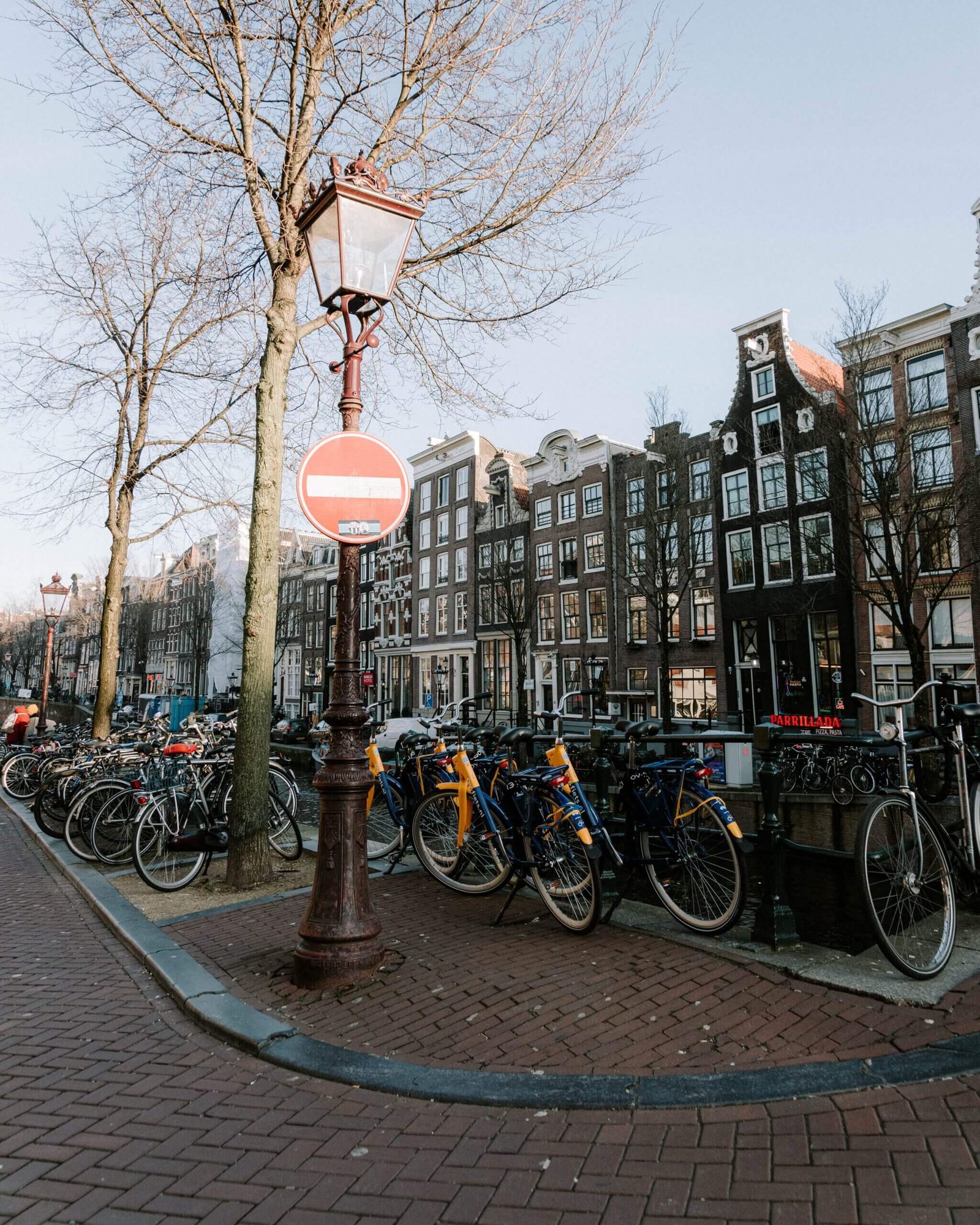Urban gardening is making a positive impact on the environment, and by extension, on our lives. With the rise of concrete jungles, the need for a green and vibrant space within cities has become imperative. Urban gardening not only beautifies these concrete landscapes but also plays a vital role in mitigating environmental issues such as air pollution, water conservation, and reducing the urban heat island effect. In this article, we will explore how urban gardening is more than just a hobby, but a powerful force in preserving and improving the health of our planet. So, let’s dig in!
Reduced Pollution
Reduction in air pollution
Urban gardening can play a significant role in reducing air pollution in cities. By cultivating plants, trees, and shrubs, you are actively contributing to cleaner air. Through a process called photosynthesis, plants absorb carbon dioxide and release oxygen, improving the overall air quality. Moreover, urban gardens can act as natural air filters, trapping pollutants such as particulate matter and various harmful gases.
Prevention of soil contamination
City soil can sometimes be contaminated due to various human activities. However, urban gardening can combat this issue. By establishing gardens on unused or vacant land, you create an opportunity to remediate and revitalize soil. Plants help prevent soil erosion and promote soil health by acting as a protective layer against pollutants. Through their root systems, they also facilitate absorption and breakdown of harmful substances, making urban soil cleaner and healthier for future use.
Less reliance on fossil fuels
Urban gardening encourages sustainable practices that reduce reliance on fossil fuels. By growing your own food and utilizing local resources, you decrease the transportation-associated carbon footprint. Traditional agriculture often requires long-distance transportation of produce, resulting in the burning of fossil fuels. In contrast, urban gardening minimizes this reliance, promoting a greener and more sustainable approach to food production.
Increased Biodiversity
Support for pollinators
Urban gardens provide essential habitats for pollinators like bees, butterflies, and birds. These creatures play a vital role in the pollination of flowering plants, contributing to plant reproduction and food production. By cultivating a diverse array of flowering plants in your urban garden, you create a haven for these valuable pollinators, thereby supporting their populations and the overall health of the ecosystem.
Habitat creation for wildlife
In addition to pollinators, urban gardens also offer a sanctuary for other wildlife species. Birds, squirrels, and beneficial insects are just a few examples of the diverse animals that can find refuge in these pockets of greenery amidst concrete jungles. By providing suitable habitats and food sources, urban gardening can help sustain and enhance local biodiversity, creating a better-balanced ecosystem within urban landscapes.
Preservation of native plant species
Urban gardening can be an effective means of preserving and promoting the growth of native plant species. Through intentional planting and nurturing of indigenous plants, you contribute to the preservation of local ecological balance. Native plants have adapted to the specific soil, climate, and pests of the region, making them essential in maintaining the unique biodiversity and ecosystem of your area.

Improved Water Management
Reduced water runoff
Urban gardens contribute to improved water management by reducing water runoff. In urban areas with extensive impervious surfaces like concrete, water tends to run off quickly, often carrying pollutants and causing flooding. However, urban gardens absorb water and slow down its flow, allowing for more efficient infiltration into the ground. This helps replenish groundwater supplies and reduces pressure on stormwater drainage systems.
Water conservation
Urban gardening promotes water conservation through various practices. By utilizing efficient irrigation methods such as drip irrigation or rainwater harvesting, you can minimize water wastage. Additionally, by implementing mulching techniques, you can reduce evaporation and retain moisture in the soil. These conservation strategies not only benefit the environment but also help save water resources and reduce water bills.
Prevention of water pollution
The use of harmful chemicals, fertilizers, and pesticides in traditional agriculture can lead to water pollution through runoff. However, urban gardening promotes organic and sustainable practices that minimize the risk of water pollution. By avoiding the use of harmful chemicals and employing natural pest control methods, you ensure that the water in your area remains clean and safe for both human consumption and aquatic life.
Mitigation of Urban Heat Island Effect
Shade and cooling effects
Urban gardening helps mitigate the urban heat island effect by providing shade and cooling effects. Green spaces and trees absorb and reflect sunlight, reducing the excessive heat buildup in urban areas. By strategically planting trees, shrubs, and green infrastructure, you can create shaded areas that offer relief from the sweltering heat. This improves the overall comfort and livability of cities, reducing the need for energy-intensive air conditioning.
Emission reduction
Urban gardening indirectly contributes to the reduction of greenhouse gas emissions. By growing food locally, you reduce the reliance on long-distance transportation and the associated emissions from vehicles. Additionally, the presence of plants in urban areas helps capture and store carbon dioxide, a major greenhouse gas. By absorbing carbon dioxide and releasing oxygen, urban gardens actively work to mitigate climate change and reduce the overall carbon footprint of cities.
Minimizing heat stress on buildings
The presence of urban gardens can help minimize heat stress on buildings. Vegetation acts as a natural insulation layer, reducing the heat absorbed by buildings and lowering cooling demands. Green roofs and vertical gardens further enhance this effect by providing an additional layer of protection against heat transfer. By reducing the heat load on buildings, urban gardening promotes energy efficiency and reduces the strain on cooling systems, ultimately leading to a more sustainable and comfortable urban environment.

Food Security
Enhanced access to fresh produce
One of the significant benefits of urban gardening is the enhanced access to fresh produce it provides. By growing your own fruits, vegetables, and herbs, you have a direct source of nutritious food right at your doorstep. This is particularly important in urban areas where access to affordable fresh produce may be limited, and food deserts are prevalent. Urban gardens bridge this gap, ensuring that individuals and communities have reliable access to healthy and locally grown food.
Reduction in food waste
Food waste is a prevalent issue with significant environmental implications. However, urban gardening can contribute to reducing food waste. By growing your own produce, you have better control over the quantity and quality of the food you consume. Surplus produce can be shared with neighbors or donated to local food banks, ensuring that it doesn’t go to waste. Additionally, organic waste from urban gardens can be composted and used to enrich the soil, closing the nutrient loop and minimizing waste generation.
Strengthening local food systems
Urban gardening strengthens local food systems by promoting self-sufficiency and reducing dependence on external sources for food. By cultivating your own food, you contribute to the resilience and sustainability of your community. Additionally, community gardens and urban farming initiatives foster social connections and engagement, creating a network of individuals working together towards a common goal of food security. This localized approach to food production helps build stronger, more sustainable communities.
Community Engagement
Social interaction and cohesion
Urban gardening plays a crucial role in fostering social interaction and community cohesion. Community gardens and shared green spaces provide opportunities for people to come together, interact, and collaborate. Whether it’s tending to shared plots, exchanging gardening tips, or organizing community events, urban gardening brings people from diverse backgrounds together, promoting a sense of belonging and collective responsibility for the environment.
Education and awareness
Urban gardens serve as invaluable educational resources, offering hands-on learning opportunities for individuals of all ages. Through urban gardening, people can learn about plant biology, sustainable practices, and the importance of biodiversity. Community gardens often organize workshops and gardening classes, allowing participants to develop new skills and gain a deeper appreciation for nature. This increased awareness contributes to a more environmentally conscious community, fostering responsible stewardship of the environment.
Crime prevention
Urban gardening can contribute to crime prevention by transforming neglected and underutilized spaces into thriving green areas. These transformed spaces discourage criminal activities by increasing surveillance and promoting community ownership. Studies have shown that well-maintained community gardens and green spaces can act as deterrents to crime, fostering a safer and more secure neighborhood. By actively participating in urban gardening, you create a positive impact on the safety and well-being of your community.

Improvement In Air Quality
Absorption of carbon dioxide
Urban gardening significantly improves air quality through the absorption of carbon dioxide. As plants photosynthesize, they utilize carbon dioxide from the atmosphere, helping to reduce greenhouse gas levels. By growing a variety of plants in urban areas, you actively contribute to this carbon sequestration process, mitigating the impacts of climate change and improving the overall air quality for yourself and others.
Release of oxygen
Along with absorbing carbon dioxide, plants release oxygen during photosynthesis. The presence of urban gardens increases the oxygen levels in the surrounding environment, making the air fresher and more breathable. This is particularly beneficial in densely populated urban areas where green spaces may be limited. By bringing nature into the concrete jungle, urban gardening improves the well-being of residents and enhances the overall quality of life in cities.
Filtering of air pollutants
Urban gardens act as natural filters, effectively removing air pollutants and improving air quality. Plants capture airborne particulate matter, pollen, and various harmful gases through their leaves and surfaces. This filtration process helps reduce respiratory health issues and prevents the deposition of pollutants on surfaces, such as buildings and streets. By actively engaging in urban gardening, you contribute to cleaner and healthier air that benefits both humans and the environment.
Waste Reduction and Recycling
Composting organic waste
Urban gardening promotes the responsible management of organic waste through composting. Instead of sending food scraps and garden trimmings to landfills where they contribute to greenhouse gas emissions, these organic materials can be composted and used as nutrient-rich soil amendments. By composting organic waste, you close the loop and minimize waste generation, promoting a circular economy and supporting sustainable gardening practices.
Reuse of materials
Urban gardening encourages the reuse of materials, further contributing to waste reduction. Repurposing containers, pallets, and other items for planters and raised beds not only reduces waste but also adds a creative and unique touch to your garden. Additionally, salvaging and upcycling materials for garden structures and decorations promote resourcefulness and minimize the consumption of new materials. Through these practices, urban gardening exemplifies sustainable living and responsible resource management.
Reduction in packaging waste
Growing your own food through urban gardening allows you to bypass the excessive packaging often associated with store-bought produce. Instead of buying fruits and vegetables wrapped in single-use plastic, you can harvest them from your garden, eliminating the need for unnecessary packaging. This reduction in packaging waste helps alleviate the burden on landfills, conserves resources, and contributes to a more eco-friendly lifestyle.

Sustainable Land Use
Utilization of vacant or underutilized spaces
Urban gardening utilizes vacant or underutilized spaces, maximizing the use of urban land. Empty lots, rooftops, and neglected areas can be transformed into productive green spaces through gardening. By repurposing these spaces, you contribute to the revitalization and beautification of your community while making efficient use of existing urban infrastructure. This sustainable land use ensures that urban areas remain vibrant and appealing while promoting environmental stewardship.
Reduction in urban sprawl
Urban gardening helps combat urban sprawl by encouraging intensification within existing urban boundaries. Instead of expanding into natural or agricultural lands, urban residents utilize available spaces for gardening, minimizing the need for further urban development. By compactly utilizing land, cities can preserve valuable ecosystems, protect biodiversity, and maintain a balance between urban infrastructure and natural landscapes.
Preservation of green spaces
Urban gardening plays a crucial role in the preservation and creation of green spaces within concrete-laden urban environments. With rapid urbanization, green spaces are often sacrificed for infrastructure development. However, urban gardens contribute to the preservation of these invaluable spaces by incorporating them into residential areas and public parks. These green oases enhance the beauty of cities, provide recreational opportunities, and improve the overall well-being of urban dwellers.
Health Benefits
Physical exercise and relaxation
Engaging in urban gardening offers numerous health benefits, starting with physical exercise. Tending to plants, digging, planting, and weeding provide a moderate-intensity workout that helps improve cardiovascular health and strength. Gardening also offers a chance for relaxation and stress reduction, providing a therapeutic escape from the hustle and bustle of urban life. Spending time outdoors, surrounded by nature, helps calm the mind and rejuvenate the body.
Stress reduction
Urban gardening has been proven to reduce stress levels and promote mental well-being. Spending time in green spaces and connecting with nature has a positive impact on mental health. Gardening serves as a mindful practice, allowing you to be present in the moment, nurture living plants, and witness the natural cycles of growth and transformation. The therapeutic qualities of urban gardening help alleviate stress, anxiety, and depression, contributing to overall mental well-being.
Improved mental well-being
In addition to stress reduction, urban gardening offers numerous psychological benefits. Cultivating plants and witnessing their growth can instill a sense of accomplishment, boosting self-esteem and cultivating a positive mindset. Urban gardens also provide opportunities for social interaction and a sense of community, enhancing social connections and decreasing feelings of isolation. The overall sense of purpose and satisfaction derived from urban gardening contributes to improved mental well-being and a higher quality of life.
In conclusion, urban gardening brings forth a multitude of benefits for both the environment and individuals. From reduced pollution and increased biodiversity to improved water management and mitigating urban heat island effect, the positive impacts are vast. Additionally, urban gardening promotes food security, community engagement, waste reduction, sustainable land use, and provides various health benefits. By actively engaging in urban gardening, you can make a remarkable difference in your surroundings and contribute to the creation of greener, healthier, and more sustainable cities. So grab your gardening gloves, choose a sunny spot, and embark on a fulfilling journey towards a more environmentally conscious and vibrant urban environment.



